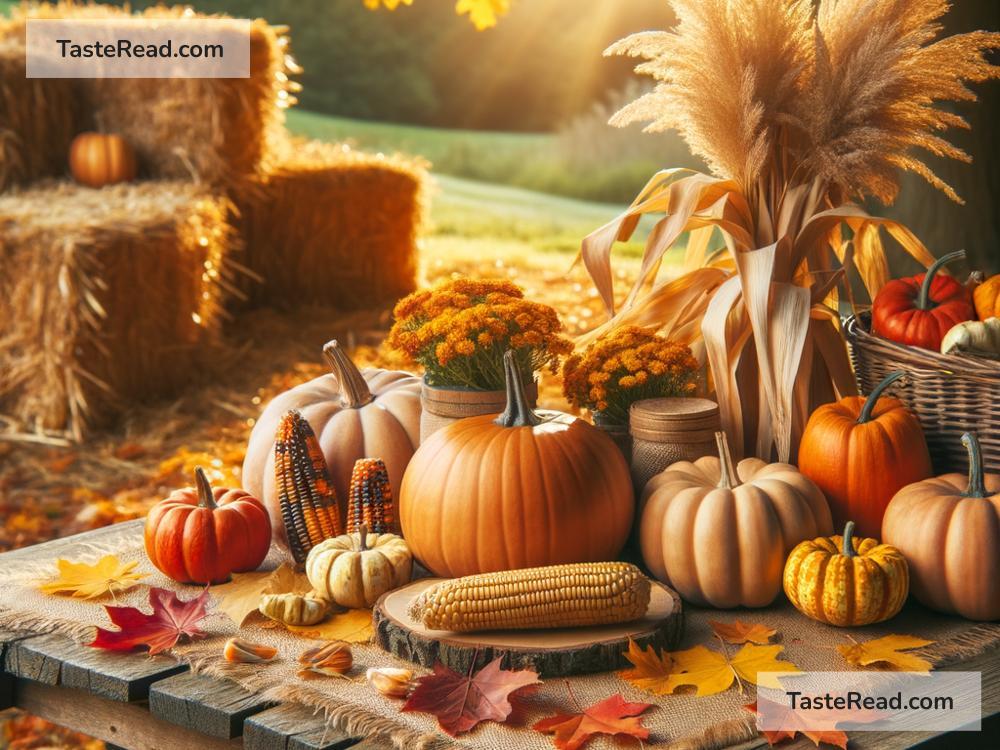How Pumpkins Became a Symbol of Harvest Celebrations
Pumpkins are one of the most-loved fruits during the fall season. Their bright orange color, round shape, and versatility make them a favorite in homes, festivals, and decorations. But have you ever wondered why pumpkins have become such a big part of harvest celebrations? Let’s explore their story and how they became an iconic symbol of autumn.
What Are Pumpkins?
Pumpkins are a type of squash that belong to the gourd family. They grow on vines and can come in different shapes, sizes, and colors, though orange pumpkins are the most common. Pumpkins are grown all around the world but are especially popular in North America. Not only are they delicious, but they are also easy to grow, making them a perfect crop for farmers during harvest season.
Pumpkins in Harvest History
Pumpkins have been around for thousands of years. Native Americans were the first to grow pumpkins, using them as a source of food. The seeds, flesh, and even the flowers of pumpkins were eaten and used for cooking. Native Americans also dried pumpkin strips and wove them into mats.
When European settlers arrived in North America in the 1600s, they learned about pumpkins from the Native Americans. These settlers adopted pumpkins as part of their diet, often using them to make soups, pies, and stews. Because pumpkins grew well in fall, many families relied on them for food during the colder months. Over time, pumpkins became closely tied to the harvest season.
The Role of Thanksgiving
Thanksgiving is one of the most famous harvest celebrations. The holiday started in the early 1600s when pilgrims and Native Americans came together to give thanks for their successful harvest. Pumpkins were part of this first Thanksgiving meal and continued to be a popular food at harvest celebrations in the years that followed.
Pumpkin pie, in particular, became widely associated with Thanksgiving. By the 1800s, pumpkin pie was a common dessert during the holiday, cementing the pumpkin’s role as a symbol of the autumn season and harvest festivities.
Pumpkins in Festivals and Decorations
By the 19th century, pumpkins weren’t just food; they started to become a part of fall traditions and celebrations. In particular, pumpkins became important in Halloween.
Halloween traces its roots to an ancient Celtic festival called Samhain, which marked the end of the harvest season and the beginning of winter. During Samhain, people carved faces into turnips or potatoes and placed them outside their homes to scare away evil spirits. When Irish and Scottish immigrants brought this tradition to North America, they found that pumpkins worked even better than turnips for carving. Pumpkins were larger, easier to carve, and abundant during October. This led to the popular tradition of carving jack-o’-lanterns, which spread quickly.
Decorating with pumpkins also became common during harvest festivals. Their natural beauty and bright color symbolized the abundance of fall. Farmers often showcased their largest pumpkins at fairs to celebrate their hard work and successful harvests. Today, many places host pumpkin festivals, featuring pumpkin carving contests, parades, and pumpkin-themed foods.
Pumpkins Today
In modern times, pumpkins are more than just a food or decoration—they represent the spirit of autumn. Whether it’s pumpkin-flavored treats like pies, soups, or drinks, or pumpkin-themed decorations, they bring a sense of warmth and tradition to the fall season. Pumpkin spice, a mix of cinnamon, nutmeg, ginger, and cloves, has become incredibly popular, especially in coffee drinks like the famous pumpkin spice latte.
Pumpkins are also a reminder of gratitude. Just as they were used during the first Thanksgiving to celebrate the harvest, they continue to symbolize the idea of giving thanks for everything we have.
Why Pumpkins Are Here to Stay
The charm of pumpkins lies in their simplicity and versatility. Not only are they delicious and nutritious, but they also encourage creativity. From carving spooky jack-o’-lanterns to baking pies or decorating your home, pumpkins make fall feel special.
Because pumpkins grow during autumn, they naturally became tied to the season’s activities. Their bright orange color represents the turning leaves, and their size reflects the abundance of harvest time. This connection to nature and tradition is why pumpkins remain an essential part of our celebrations.
Conclusion
Pumpkins have come a long way from being a simple food crop to becoming a beloved symbol of harvest celebrations. Their role in Thanksgiving, Halloween, and autumn traditions has made them a lasting part of our culture. Every fall, as we carve jack-o’-lanterns, drink pumpkin spice lattes, and feast on pumpkin pie, we celebrate the history and meaning behind this humble fruit.
So next time you see a pumpkin in the store or on a doorstep, remember the journey it has taken to become a symbol of the harvest season. Pumpkins remind us to savor the moments of gratitude, creativity, and joy that autumn brings each year.


